FST has successfully held the first lecture for new academic year and started a new chapter with freshmen
澳大科技學院圓滿舉辦學院第一堂課,與新生共同迎來新篇章
The Faculty of Science and Technology (FST) of the University of Macau (UM) held the first lecture and orientation of the academic year 2020/2021 for undergraduate and postgraduate freshmen on today and yesterday (3 Sep and 4 Sep). More than 210 undergraduates, 120 postgraduate students and professors joined this event together to welcome a new academic year. In response to the outbreak of the novel coronavirus, FST launched the first lecture with both online and offline platforms. In order to make students easier to ask questions and let them feel a warm and sincere welcome of the Faculty, Dean of FST Prof. Cheng-Zhong Xu, the Associate Deans and Assistant Deans visited every classrooms where students were located to answer their questions, while reminding them to well manage time at UM to prepare for a successful life in the future.
Dean Xu encouraged undergraduate freshmen to learn how to study independently and to plan for their future wisely, and inspire them to participate more into exchange activities, enrich their knowledge by exploring the world. Besides, he also advised new postgraduate students that postgraduate year is a period of personal growth and professional development that equip them for life, while learning new knowledge, Dean Xu shared that students should be independent and have creative thinking so as to develop their professional skills and competitiveness.
When giving the first lecture, Dean Xu introduced the history and achievements of the Faculty. He shared that UM has achieved important breakthroughs in scientific research in recent years. Under the research strategy of “3+3+3” of the University, FST have cooperated with different universities and institutions within Greater Bay Area, including signing cooperation agreements and establishing joint laboratories. It is expected to integrate into the development of the Guangdong-Hong Kong-Macao Greater Bay Area and cultivate talents for local community and the Greater Bay Area. To better support the development of science and technology and promote the transformation of scientific achievements, FST has joined the establishment of Centre for Regional Oceans and Centre for Applied Mathematics. In the future, the Faculty will keep on researching the cutting-edge technologies such as 5G communications, cloud computing, artificial intelligence, and automatic driving, so as to enhance the competitiveness of UM and promote local development of scientific research and the Greater Bay Area. The ‘3+3+3’ model refers to UM’s three state key laboratories (for integrated circuits, Chinese medical sciences, and Internet of Things for smart cities, respectively ), three new key research areas (precision medicine for cancer treatment, advanced materials, and regional oceanography), three interdisciplinary research fields (artificial intelligence, cognitive and brain science, and data science).
Classes for the new academic year will begin on Monday (7 Sep). The first lecture and orientation this year allowed new students to have a greater understanding of UM and the Faculty, it assisted them to adapt to university life, and prepared for their new chapter in life.
澳大科技學院於今天及昨天 (3 及 4日) 舉行了2020/2021學年學院第一講及迎新會,與超過210名本科、120名碩士新生及教授共聚一堂迎接新學年。因應疫情發展,科技學院以線上線下形式向新生展開了第一堂課。為了令學生感受到學院誠摯的歡迎及更好地發問,科技學院院長須成忠教授、副院長及助理院長等人親自前往學生所在的每一個教室解答他們的問題,同時也寄語學生好好把握在澳大的時光,為實現成功的人生做準備。
院長須成忠教授勉勵本科學生在努力不懈地求學同時,更應懂得獨立處事及早規劃未來。希望學生不忘放眼世界,積極參與交流活動,增廣見聞。另一方面也寄語碩士生,碩士是一段對個人成長和職業發展都終生受用的經歷。在承接新知識的同時,更應學會獨立思考和創新,加強自身專業能力及競爭力。
迎新會上,須院長介紹科技學院多年歷史及研究成果,並表示近年來澳大在科研上屢獲突破,在「3+3+3」戰略佈局下,科技學院與大灣區內院校大學及機構展開了不同的合作關係,包括簽訂合作協議及成立聯合實驗室,期望融入粵港澳大灣區的發展並合為灣區培養人才。為更好地支持科技發展及推動成果轉化,學院積極參與建設區域海洋研究中心、應用數學研究中心。未來,學院也將繼續積極研究5G通信、雲計算、人工智慧、無人駕駛等前沿技術,以提升澳大的競爭力及促進澳門及大灣區的的科研發展。澳大的「3+3+3」戰略研究佈局包括三間國家重點實驗室(集成電路、中醫藥和智慧城市物聯網)、三個重點發展方向(腫瘤精準醫療、先進材料和區域海洋研究)、三個跨學科交叉領域(人工智能、認知與腦科學和數據科學)。
澳大新學年將於下周一(7日)正式開始上課。期望本年度學院第一講及迎新會能幫助學生了解澳大及科技學院,適應大學生活,為展開人生新篇章作好準備。
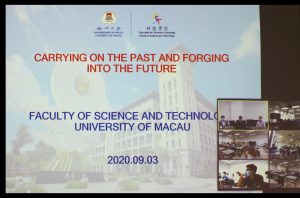
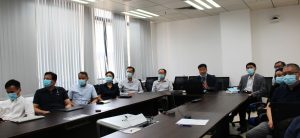
The first lecture and orientation
of the academic year 2020/2021
2020/2021學年學院第一講及迎新會
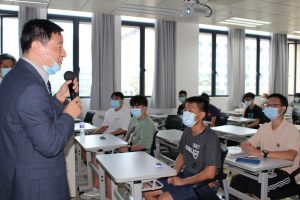
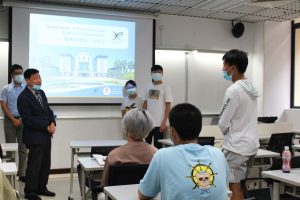
Dean of FST Prof. Cheng-Zhong Xu, the Associate
Deans and Assistant Deans visited every classrooms where
students were located to answer their questions
科技學院院長須成忠教授、副院長及助理院長等人
親自前往學生所在的每一個教室解答他們的問題
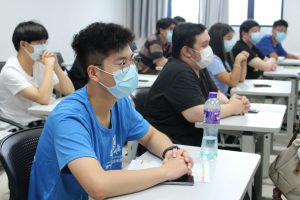
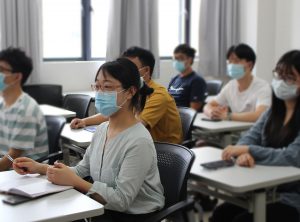
The lecture allows new students to have greater understanding
of UM and the Faculty, assist them to adapt to university life
助學生了解澳大及科技學院,適應大學生活
UM develops intelligent system to quickly tell COVID-19 from common pneumonia
澳大成功研發智能系統用於快速區分新冠肺炎檢測
Prof Wong Pak Kin in the Faculty of Science and Technology of the University of Macau (UM) and his doctoral student Yan Tao in the Department of Electromechanical Engineering have developed an intelligent system that can successfully distinguish pneumonia caused by the novel coronavirus (COVID-19) from other common types of pneumonia, at a speed that is nearly 60 faster than radiologists, bringing a new feasible solution for pneumonia detection. The study has been published by the international science journal Chaos, Solitons & Fractals.
COVID-19 infection is typically confirmed through reverse-transcription polymerase chain reaction (RT-PCR). However, RT-PCR tests have many problems, such as insufficient supply of the RT-PCR kit, the amount of time required, and a high rate of false negatives. These can impede prompt diagnosis and increase the chances of the spread of the virus. Many experts have proposed using chest computed tomography (CT) to diagnose suspected cases of COVID-19 infection, because CT can detect infection even during the first stage. CT diagnosis has a very high degree of accuracy and can provide more clinical information, but CT images require manual identification of radiographic features. The rapid growth in the number of COVID-19 patients and the necessity for each patient to undergo multiple CT scans (more than 100 slices per scan) have led to a large number of CT images, presenting an enormous challenge for radiologists, especially in areas hit hardest by the pandemic.
In order to address this issue, Prof Wong and Yan Tao worked with researchers at other institutions in Hubei province, namely Wang Jiangtao, deputy director of the Department of Radiology at Xiangyang Central Hospital and Doctor Ren Hao at the same hospital; Li Yang, deputy director of the Department of Radiology at Xiangyang First People’s Hospital; and Wang Huaqiao, a surgeon in the Division of Surgery at the same hospital. They retrospectively collected data on 206 patients with confirmed positive RT-PCR for COVID-19 and their 416 CT scans, as well as data on 412 patients with non-COVID-19 pneumonia and their 412 chest CT scans with clear signs of pneumonia. Based on these CT images, they developed an automatic diagnosis system based on a multi-scale convolutional neural network. The verification results have shown that after being fed a limited amount of data, the intelligent diagnosis system can successfully distinguish COVID-19-caused pneumonia from other common types of pneumonia. Its diagnostic ability is comparable to that of experienced radiologists, but the diagnosis speed is nearly 60 faster. This brings a new feasible solution for pneumonia detection. Prof Wong’s team hopes to expand the functions of the system. They are working to develop a multi-type pneumonia diagnosis algorithm and a new coronavirus pneumonia severity prediction algorithm, which is expected to be completed soon. The intelligent system will be able to distinguish between normal lungs and lungs infected with five common types of pneumonia, thereby predicting the severity of the condition of COVID-19 patients.
The related paper, titled ‘Automatic Distinction between COVID-19 and Common Pneumonia using Multi-Scale Convolutional Neural Network on Chest CT Scans’, has been published by the international science journal Chaos, Solitons & Fractals, a SCI Q-1 journal, only one month after its submission.
澳門大學科技學院王百鍵教授及機電工程系博士生晏濤開發一種基於多尺度卷積神經網絡的智能自動診斷系統,能成功區分新型冠狀病毒肺炎和其他常見的肺炎,診斷速度比醫生快將近60倍,為肺炎檢測帶來新的可行方案。該研究剛獲國際科學期刊Chaos, Solitons & Fractals發表。
新冠病毒肺炎一般通過深喉唾液核酸測試來確認,但核酸測試也存在不少缺點,例如供應不足,費時且假陰性率高等問題,可能導致患者無法及時診斷,更可能導致病毒擴散。目前,眾多專家已建議使用胸部電腦斷層掃描(CT)來診斷可疑病例,因為即使在發病初期,也可以透過胸部電腦斷層掃描來檢測。CT診斷準確性高且可以提供與治理有關的詳盡資訊,但胸部電腦斷層掃描圖像則需要人手識別其特徵,加上患者眾多及每位患者的多次CT掃描皆產生了大量的CT圖像(每次掃描平均產生過百片圖像),這對身處疫情嚴峻地區的放射科醫生來說是一個重大挑戰。
為此,王百鍵教授及晏濤於疫情初期便與湖北省襄陽市中心醫院放射科的副主任王江濤、醫師任浩、襄陽市第一人民醫院的放射科副主任李陽以及普外科主治醫師王華僑合作研究,取得了這兩間醫院的206個核酸檢測為陽性的個案及他們416組胸部電腦斷層掃描圖像。另一方面,他們在醫院內也取得了412組沒有新型冠狀病毒但只有普通肺炎的胸部電腦斷層掃描圖像。
基於這些少量CT圖像,研究團隊研發一種基於多尺度卷積神經網絡的自動診斷系統。驗證結果表明,在有限數量的訓練數據下,該智能診斷系統能成功區分新型冠狀病毒肺炎和其他常見的肺炎,其診斷能力與經驗豐富的放射科醫生相當,但診斷速度卻比醫生快將近60倍,這為肺炎檢測帶來新的可行方案。此外團隊還進一步拓展該系統的功能,他們開發的多類肺炎診斷算法及新型冠狀病毒肺炎嚴重性預測算法已接近完成。不久後,該智能系統將可具有區分正常肺部與五種常見肺炎及對新冠病毒肺炎患者進行嚴重性預測的能力。
研究論文《運用多尺度卷積神經網絡從胸部電腦斷層掃描圖像中自動區分新型冠狀病毒肺炎和普通肺炎》(Automatic Distinction between COVID-19 and Common Pneumonia using Multi-Scale Convolutional Neural Network on Chest CT Scans)剛獲國際科學期刊Chaos, Solitons & Fractals發表,此論文從遞交至正式發表僅用了一個月。Chaos, Solitons & Fractals 是SCI一區期刋。
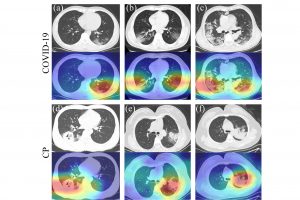
CT scan images of patients with COVID-19-caused
pneumonia and patients with regular pneumonia
together with region of lesions generated by the
intelligent diagnosis system
新冠肺炎病者及普通肺炎病者的胸部電腦斷層掃描圖像
及智能診斷系統產生的肺炎部位識別圖
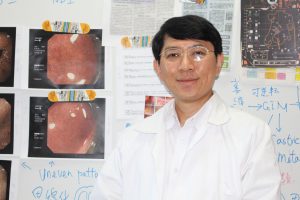
Prof. Wong Pak Kin of FST
科技學院王百鍵教授

Ph.D. student from the Department of
Electromechanical Engineering, Yan Tao
機電工程系博士生晏濤


